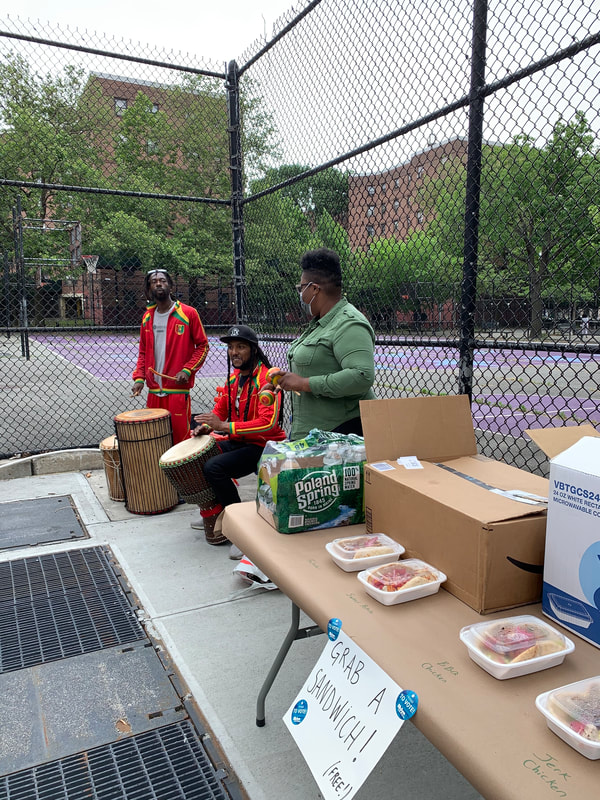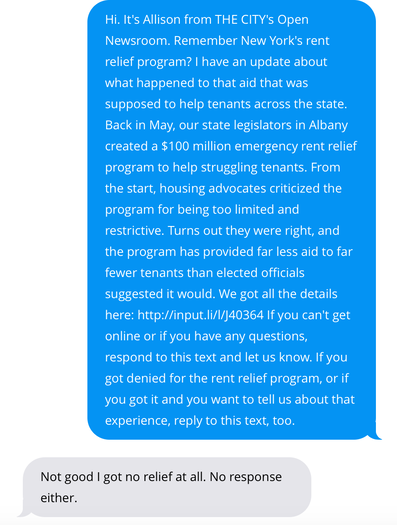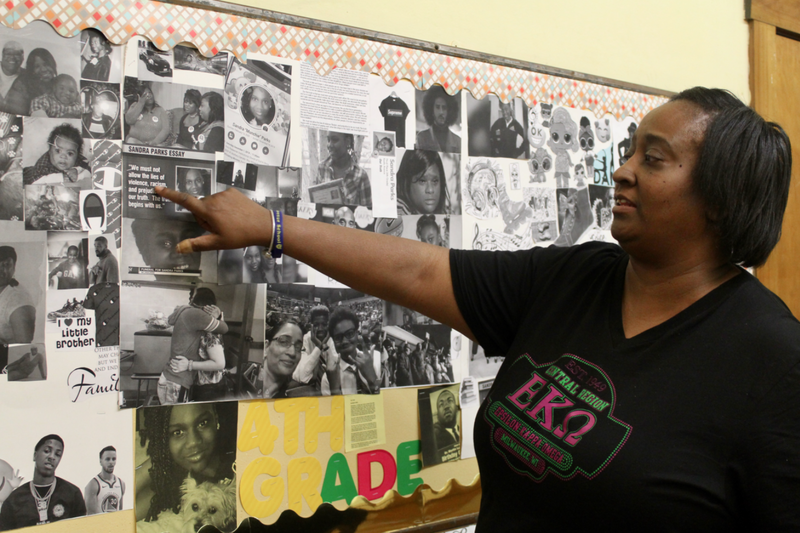Allison's work explores how newsrooms can better listen to, respond to, collaborate with and directly meet the needs of those most impacted by an issue — to make information more accessible and helpful, fuel more impactful investigation and ultimately expand who and how journalism serves.
In addition to reporting daily, explanatory and enterprise stories, her work has taken the form of callouts, email newsletters, SMS text updates, virtual and in-person events, Twitter threads, Instagram slides, flyers, mailers and more to meet audiences where they are — and to build new ones.
She's easiest to find on Twitter at @al_dikanovic.
These are some of her favorite projects.
In addition to reporting daily, explanatory and enterprise stories, her work has taken the form of callouts, email newsletters, SMS text updates, virtual and in-person events, Twitter threads, Instagram slides, flyers, mailers and more to meet audiences where they are — and to build new ones.
She's easiest to find on Twitter at @al_dikanovic.
These are some of her favorite projects.
civic newsroom
Civic Newsroom is a project from THE CITY that aimed to better understand and respond to the information voters needed ahead of June 2021's local primary elections in New York.
We wanted to see if engaged reporting strategies could help voters navigate an overwhelming and important election, and hopefully positively impact voter mobilization in the city. Our goal was to become a resource to two audiences: New Yorkers actively seeking election information, as well as registered voters who don't regularly participate in local elections.
We had a callout with thousands of responses and a series of virtual events where voters offered questions and ideas that guided stories, newsletters, explainers, candidate surveys and voter guides leading up to the primary. To be able to better reach more voters, we held outdoor events in three neighborhoods with historically low turnout and translated information into three additional languages.
We wanted to see if engaged reporting strategies could help voters navigate an overwhelming and important election, and hopefully positively impact voter mobilization in the city. Our goal was to become a resource to two audiences: New Yorkers actively seeking election information, as well as registered voters who don't regularly participate in local elections.
We had a callout with thousands of responses and a series of virtual events where voters offered questions and ideas that guided stories, newsletters, explainers, candidate surveys and voter guides leading up to the primary. To be able to better reach more voters, we held outdoor events in three neighborhoods with historically low turnout and translated information into three additional languages.
|
NEWSLETTERS: I co-led the crowd-sourced reporting and production process as part of a small team that published 25 weekly newsletters that we distributed via email and text message—answering reader questions and breaking down the election process. Our list grew to about 6,200 readers, and the open rate stayed between 45-55%. The text click through rate was about 25%.
SOCIAL MEDIA: I developed social strategy for each of the newsletters and explainers, which included planning and writing Twitter threads and Instagram slides. A colleague designed the slides.
|
VIRTUAL EVENTS: I co-planned the agendas and led outreach for our series of six virtual meetings. I also built partnerships with community-based organizations in each of the three neighborhoods we focused on to cohost with us. The meetings connected us with engaged citizens who were passionate about mobilizing voters in their neighborhoods, as well as new partners. But, we also realized that the events were a steep ask for voters who weren't already super engaged, especially with so much Zoom fatigue, leading us to pivot a bit.
|
FUELING REPORTING: Feedback from the virtual events and our callout form informed our election coverage. For example, lots of readers asked for more information about their neighborhood races like City Council and borough president. That led us to create a map showing who's running in every district, a story explaining what City Council members do and candidate surveys for the borough president races.
VOTERFEST (OUTDOOR EVENTS): While the newsletters, text alerts and explainers proved useful to those actively seeking election information, we needed to be more creative to reach irregular voters.
We condensed information from the newsletters into a pocket voter guide in four languages to distribute at libraries, community events and mainly at the Voterfest events that we co-hosted with community partners in three neighborhoods with historically low voter turnout.
The goal of Voterfest was to meet voters where they were and have information available and accessible to anyone walking by. Each event included performances from neighborhood-based artists, locally-catered free food, printed voting information and journalists and community partners ready to chat and answer questions.
We condensed information from the newsletters into a pocket voter guide in four languages to distribute at libraries, community events and mainly at the Voterfest events that we co-hosted with community partners in three neighborhoods with historically low voter turnout.
The goal of Voterfest was to meet voters where they were and have information available and accessible to anyone walking by. Each event included performances from neighborhood-based artists, locally-catered free food, printed voting information and journalists and community partners ready to chat and answer questions.
open newsroom rent updates
The pandemic pushed us at THE CITY to be attentive to the urgent needs that were coming up in our community to help people get through such uncertain times. We made a callout, and I started answering thousands of readers’ questions about COVID. We also started hosting Virtual Open Newsroom meetings to gather people and resources.
One of the topics that came up over and over again was rent. Tenants had questions about their rights, what to do if they couldn’t pay, what to do if their landlord wanted to evict them and where to turn if they needed help.
Our engagement team held an online event where experts answered people’s questions, but we soon realized that holding events and compiling resource guides wasn’t the most effective way to get people the information they needed because so much was changing week to week.
We wanted to offer timely information in an easy to understand format, so I created the Open Newsroom Rent Updates.
One of the topics that came up over and over again was rent. Tenants had questions about their rights, what to do if they couldn’t pay, what to do if their landlord wanted to evict them and where to turn if they needed help.
Our engagement team held an online event where experts answered people’s questions, but we soon realized that holding events and compiling resource guides wasn’t the most effective way to get people the information they needed because so much was changing week to week.
We wanted to offer timely information in an easy to understand format, so I created the Open Newsroom Rent Updates.
|
Since the fall of 2020, I have checked in with a network of organizers and tenant lawyers to see what the biggest questions are that people have or the biggest news tenants should know about.
I break it down in a newsletter that goes out via both email and text message, and they’re also published on THE CITY’s site. Thousands of New Yorkers are getting email updates, nearly 800 people are getting text message updates, and the newsletter’s open rate hovers around 43%. To get the updates to tenants who speak Spanish, we started partnering with Documented and distribute the translated updates via their Whatsapp newsletter. I also write Twitter threads and create Instagram slides for each update. |
news414
|
|
News414 is a collaborative texting and reporting project with Wisconsin Watch, Milwaukee Neighborhood News Service and Outlier Media that was part of a 2020 Google News Initiative grant.
The project was inspired by Outlier’s model to use SMS texting to both inform and learn from Detroit residents about housing and utility issues, but we transformed the service to meet Milwaukeeans' information needs during the pandemic. News414 shared COVID-related info & resources with residents through text messages and reported stories based on texters’ concerns. Our team texted about 10,000 Milwaukee residents each week, and people also texted MKE to 73224 to reach us directly. We reported stories about rent, evictions, the election, the city budget and school reopening plans. I designed the text surveys, managed the text service, reported and wrote stories, developed and executed social media strategy and did outreach throughout the summer at protests and other outdoor events. This Twitter thread illustrates how the News414 process worked when reporting on evictions and rent relief in Milwaukee: |
reporting highlights
full clips
Contact: al [dot] dikanovic [at] gmail [dot] com
Twitter: @al_dikanovic
Twitter: @al_dikanovic

















































